Your Personal Cloud: How to Choose the Best NAS Server for Home
Updated: August 29, 2025 Author: Vitaly
If you, like me, are tired of rising cloud storage prices and the virtual lack of control over your data, then this article is for you. I will share my experience of switching to your own home storage and tell you how to choose the best NAS.
Like millions of people, until recently I stored all my work documents, and most importantly family photos and videos, in a popular cloud service. It's really convenient: take a photo on your phone, and it's instantly uploaded to the cloud via a proprietary app. I can view the footage on the same phone or on a computer synchronized with the account.
Despite its simplicity and convenience, storing personal files in cloud storage has three significant drawbacks:
Rising subscription costs. Monthly payments for Google Drive, iCloud, or Dropbox may seem small, but they add up in the long run. And data volumes are only growing.
Lack of control over your data. Where are your files actually stored? Who has access to them? Privacy and security issues are becoming increasingly acute, and handing over personal archives to third parties raises legitimate concerns.
Inconvenience of managing large files. Family archives, 4K video from vacation, work projects – managing hundreds of gigabytes or even terabytes of data through the cloud, the server of which is located thousands of kilometers away from you, can be slow and inconvenient. All interaction with files is carried out through limited Internet channels.
For me, these shortcomings became critical when the size of my cloud began to approach 2 TB and the question arose about the need to purchase additional memory.
It was at this point that I started thinking about getting my own network storage – NAS (Network Attached Storage). This device solves all three problems, providing full control, high-speed access, and long-term savings. And if you’re wondering what it’s for in the first place, the answer is simple: to store the most valuable things – your photos and videos.
Why photos and videos?
Even if your profession is not related to photos, images or videos, it is media files that eat up the lion's share of disk space. In my case, documents, music, work files - all this takes up no more than 10-20% of the total volume. But photos and video archives - 80-90% of the space.
In addition, they have one key feature - long-term value. You can watch a TV series and delete it, because it is always available online. But photos of a child in infancy, a video from a wedding or an archive of photos from travels - these are unique memories that you want to save for decades. Storing such volumes in high quality (especially with modern cameras) in commercial clouds is becoming an unaffordable luxury.
Own NAS or buy a cloud subscription: what is more profitable
Before I started looking at specific NAS options, I did a deep dive into the prices of popular cloud storage providers and compared them to the cost of purchasing and maintaining a home server.
Google One, Dropbox, and Microsoft OneDrive offer ubiquitous access to data from any internet-connected device, zero hardware maintenance, and built-in backup mechanisms that free the user from technical worries. However, this simplicity comes at a price – a subscription model that involves ongoing and, as practice shows, growing costs.
- Google One: The 2TB plan has increased significantly in price in some countries in 2025, with the increase sometimes reaching 400%. For the US market, the standard annual price for the 2TB plan remains at $99.99.
- Dropbox: The 2TB Plus plan is priced at $9.99 per month when billed annually. For more demanding users, there's the 3TB Professional plan for $16.58 per month when billed annually.
- Microsoft OneDrive: Storage is integrated into the Microsoft 365 suite. The Personal plan includes 1 TB for $99.99 per year, while the Family plan offers up to 6 TB (1 TB for six users) for $129.99/year.
To quantify the ROI of each approach (NAS/cloud storage), I conducted a comparative TCO analysis of a 4TB solution over five years.
Since 4TB plans for individual users are rare, I used the cost of two Google One plans of 2TB each as the base unit. This would result in an annual cost of approximately $99.99 x 2 = $199.98.
Next, I calculated the initial investment for a ready-made NAS server. For the reference model, I chose the Synology DiskStation DS224+, a popular solution for home users at $299.99. To this we will add two Seagate IronWolf 4TB hard drives, specially designed for NAS. The average market price is $105 per drive, so $210 for the pair. The drives will be configured in RAID 1 for fault tolerance, giving 4TB of usable, protected space.
Total initial cost of NAS: 299.99+210=509.99 dollars. But the server cannot operate without power, so to the initial investment you should add annual electricity costs of $25 (based on 20 watts of 24/7 operation at $0.15/kWh).
As a result, I got the following table.
| Year | Annual cloud cost (USD) | Accumulated Cloud Value (USD) | Initial Cost of NAS (USD) | Accumulated NAS Value (USD) |
|---|---|---|---|---|
| 1 | 199.98 | 199.98 | 509.99 | 534.99 |
| 2 | 199.98 | 399.96 | 0 | 559.99 |
| 3 | 199.98 | 599.94 | 0 | 584.99 |
| 4 | 199.98 | 799.92 | 0 | 609.99 |
| 5 | 199.98 | 999.90 | 0 | 634.99 |
As you can see from the table, by the third year, the total cost of cloud storage exceeds the initial investment in NAS. The breakeven point, when the accumulated cost of NAS becomes lower than the cloud, occurs during the third year of operation. This clearly demonstrates the long-term economic benefit of owning local storage.
Buy a ready-made NAS or build it yourself?
Having decided that having a home cloud storage has a real economic benefit, I faced a new question: which NAS option to choose: ready-made or to assemble yourself. Despite having experience in selecting components and assembling personal computers, in any case you need to spend your free time. I decided to analyze the possibilities that ready-made and DIY solutions provide.
Brand Guide: Synology vs. QNAP
As it turns out, Synology and QNAP are two giants in the home NAS server market. The former is often compared to Apple macOS, while the latter is often compared to Microsoft Windows. Synology's philosophy is simplicity, convenience, and seamless integration of software and hardware. You get a beautiful, intuitive DSM (DiskStation Manager) operating system with a huge app store.
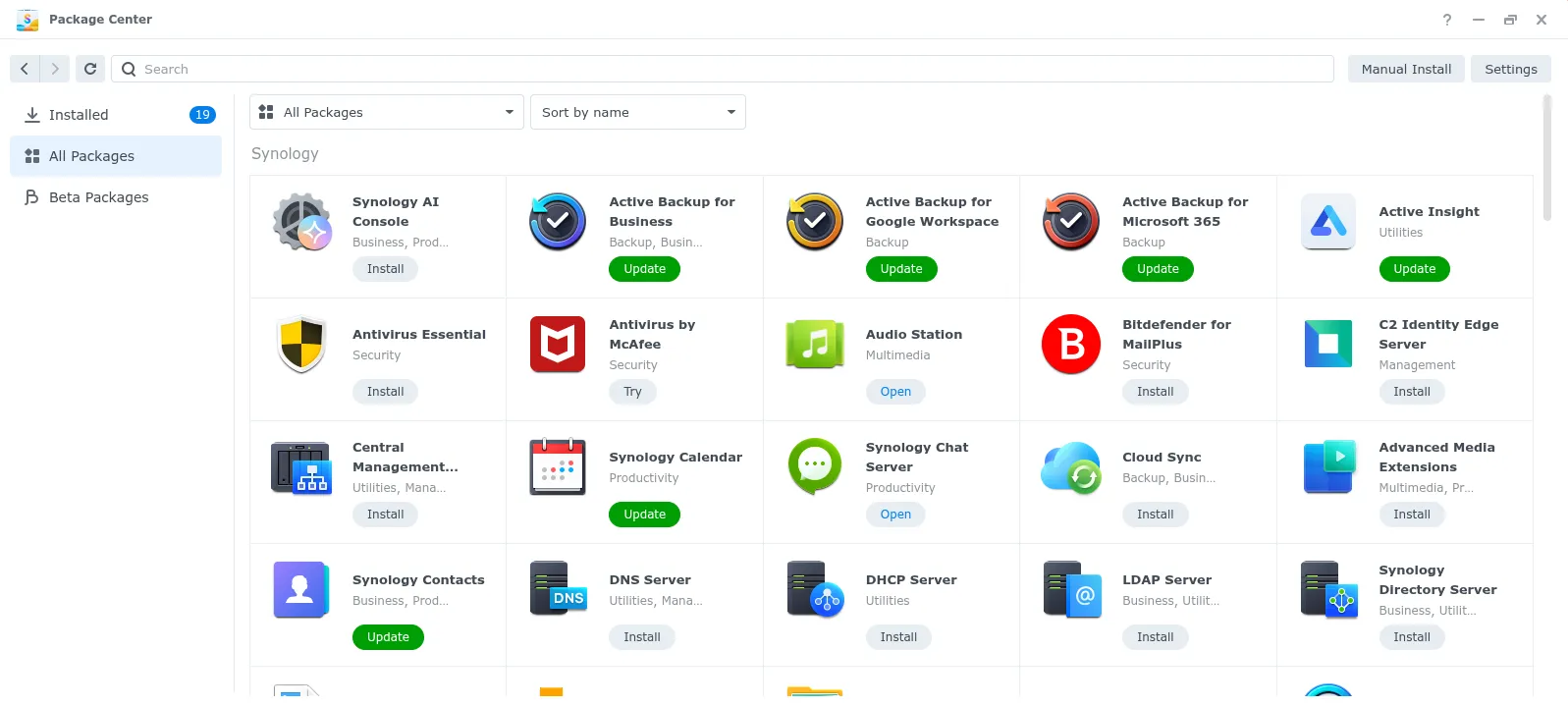
QNAP offers more powerful hardware for the same money and flexibility in settings. Their QTS operating system (QTS Hero) provides more control, supports more complex configurations (for example, ZFS). Therefore, the presented solutions are more likely a choice for users who like to customize everything for themselves and want to squeeze the most out of their device.
Unlike Synology, QNAP has NAS models equipped with full PCI-E for video cards and HDMI ports. As a result, you get not just a NAS for storage, but a full-fledged computing server for decoding video or running local AI models using virtualization.
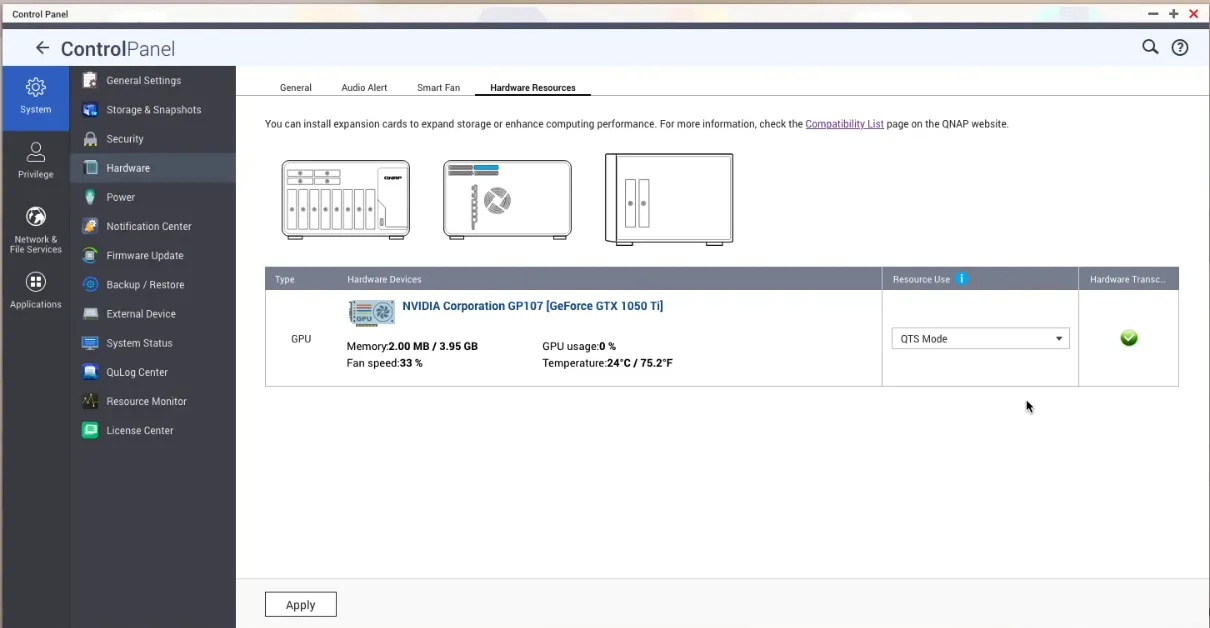
For Enthusiasts: How to Build Your Own NAS
At first glance, it may seem that selecting components is the most difficult thing. However, the key element on which the functionality of the assembled NAS directly depends is the operating system (OS). For me, this turned out to be the most difficult decision, because several scenarios appear at once: install a pure Linux distribution (for example, Debian) and customize it for your needs, or use specialized OS.
TrueNAS is a powerful and reliable FreeBSD-based system with a focus on data integrity. It has built-in checksum mechanisms to prevent data loss, supports snapshots, and flexible software RAID levels (RAID-Z).
Ideal for storing archives, important documents, family photos and videos. However, there are no built-in functions for managing the latter. You need to separately install the appropriate software from the built-in App Store.
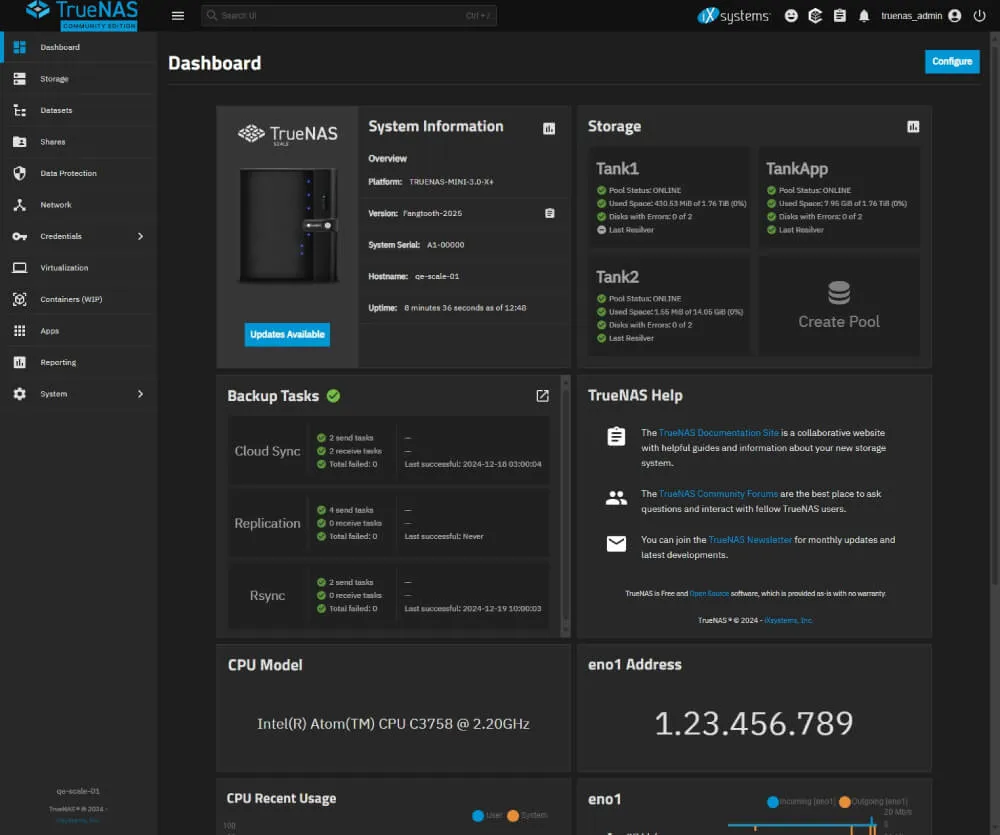
Similar in functionality, but easier to configure is Unraid. The uniqueness of this system is that it allows you to use disks of different sizes and easily expand the storage. It has excellent support for Docker containers and virtual machines.
As with TrueNAS, there is no built-in tool for organizing photos, but there is the possibility of expanding the functionality through add-ons.
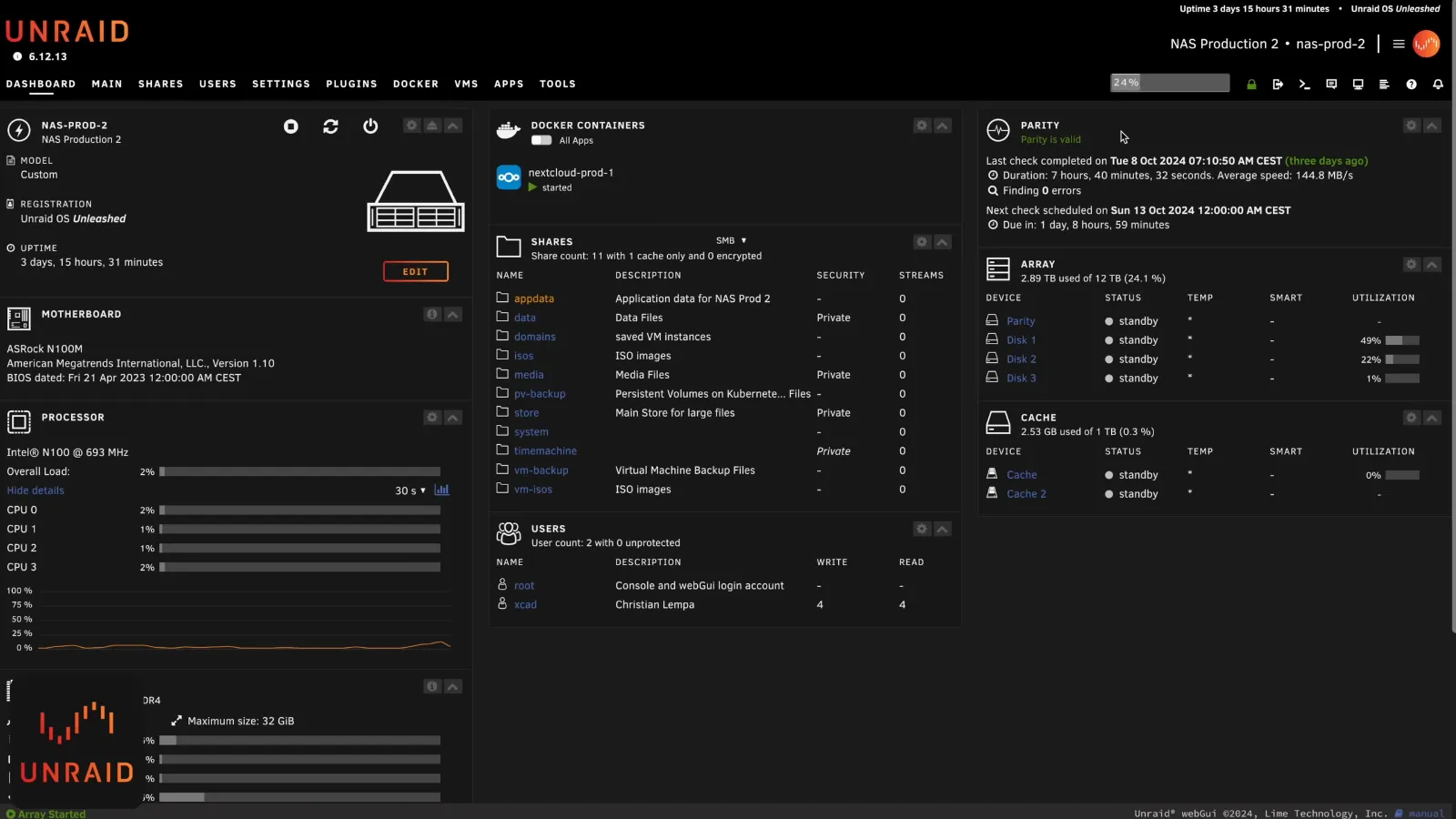
The problem with both NAS operating systems is that they are difficult to set up, although they provide good functionality. If you consider solutions with a simpler interface, such as OpenMediaVault, you only get basic NAS capabilities. At the same time, installing additional extensions, including for organizing photos, does not always go smoothly.
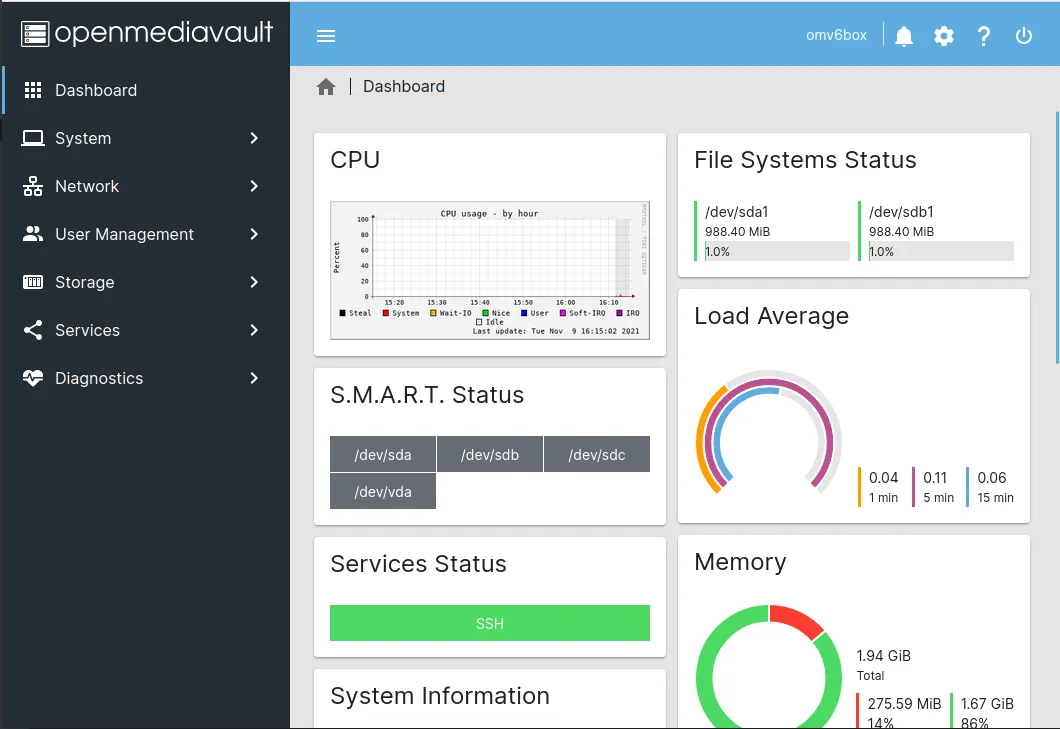
Despite all the difficulties with setup, self-assembled NAS have the following advantages:
- Flexibility in hardware selection. Unlimited choice of processor, RAM, network cards (e.g. 10GbE) and case allows you to create a system that exactly meets your specific requirements.
- High performance. The ability to use powerful desktop or server processors and large amounts of RAM can provide performance that far exceeds that offered by the Celeron or ARM CPUs in most off-the-shelf NAS.
- Potential savings: With careful planning and component selection, especially on the aftermarket, a custom system can be less expensive than a ready-made model of comparable performance.
The problem is that this path requires a higher level of technical expertise, time for research and checking the compatibility of components.
Comparative Cost Analysis of Off-the-Shelf and Custom NAS
If setting up operating systems for a self-assembled NAS is so complicated, I wondered if it was worth doing at all, and if there was any economic benefit.
To give you an objective look, I put together a cost estimate comparing a popular off-the-shelf model with a functionally equivalent DIY configuration. The benchmark was the $299.99 Synology DS224+ (without drives). The unit is equipped with an Intel Celeron J4125 processor and 2GB of RAM (expandable).
The calculation of the budget DIY assembly included the following elements:
- Platform (motherboard + CPU + RAM): Used H110/H310 socket kits with Pentium/i3 CPU and 16GB DDR4 RAM can be found for ~$65-$90.
- Case. Specialized NAS cases range in price from $50 to $300. Let's budget $100.
- Power supply. A reliable Flex ATX 300W power supply costs around $50-75.
- System storage: A small SSD for loading the OS will cost about $20.
Total DIY base cost (excluding discs): ~$255.
At first glance, the prices of the basic systems are comparable. However, a detailed examination of the specifications reveals a significant difference. The DIY assembly offers significantly more powerful components for the same price. For example, 16 GB of RAM in a DIY configuration versus 2 GB in the DS224+ is not just a quantitative difference.
Therefore, a DIY build is not just "a little cheaper", it is fundamentally more capable of performing complex tasks and running advanced software.
How to Organize Photos on a Home NAS
So, the last point in the search for the best NAS for home is how to organize thousands of photos that have accumulated over all the years of using cloud storage. You will find out how to export an archive in the article How to transfer photos from Google Photos: difficulties and their solutions..
Organizing Photos in Ready-Made NAS
NAS manufacturers like Synology and QNAP offer great built-in apps for organizing photos. They automatically index your folders, recognize faces and objects, create albums, and make it easy to share with family. It’s a simple, easy way to manage your photo archive without requiring deep technical knowledge.
Synology Photos is a modern and intuitive app that combines the features of the old Photo Station and Moments. It automatically scans the folders on your NAS and organizes your photos.
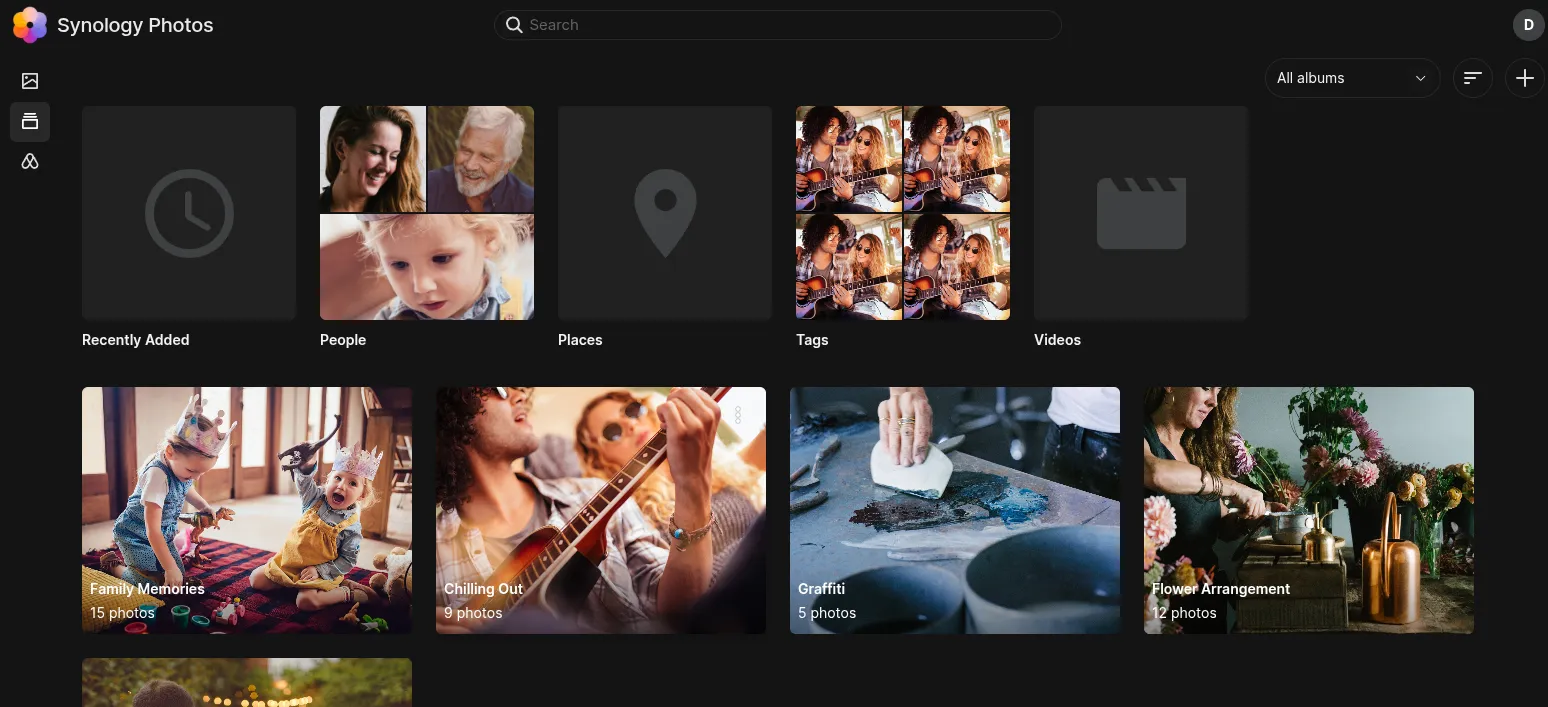
The program has excellent face and object recognition, as well as geolocation. It automatically creates albums based on this data, allowing you to quickly find all the photos with a specific person or in a specific place. The application also makes it easy to share photos and albums with other NAS users or create public links.
QNAP's QuMagie also has built-in AI technology to recognize faces, objects, and places. The app automatically categorizes photos to create smart albums.

The main difference between Synology Photos and QuMagie is their interface and approach. Synology Photos offers a more classic, streamlined interface with two viewing modes, while QuMagie focuses on an interactive timeline.
Tonfotos – A one-stop solution for organizing photos on NAS
Indeed, the standard applications of ready-made NAS have impressive functionality, but for me, using them is equivalent to being dependent on cloud storage. Situations in life are different, so I would not like to be tied to a specific product again. Perhaps in the future, I will want to build my own NAS, where there will be no Synology Photos and QuMagie.
Luckily, I found a universal solution in the form of a cross-platform photo manager Tonfotos. This specialized application recognizes faces more accurately. Tonfotos uses modern neural networks that allow you to identify not only people looking directly at the lens, but also in conditions of partial visibility. This allows you to more effectively organize photos by people and create albums. In addition, Tonfotos automatically groups photos by events, dates and locations, which simplifies navigation through large collections.
I would like to separately note the following advanced features that are missing in Synology Photos and QuMagie:
- Remove duplicates: Automatically find and remove duplicate photos to help save space on your NAS.
- Genealogical information. The ability to add and store data about relatives and friends, making it useful for creating family archives. You can even generate a family tree based on the connections you create.
- Automatic import from smartphone. Convenient function for quick transfer of photos from mobile devices.
The best part is that I can use Tonfotos no matter what NAS I have. I just need to specify in its settings where the photos are located in the shared folder.
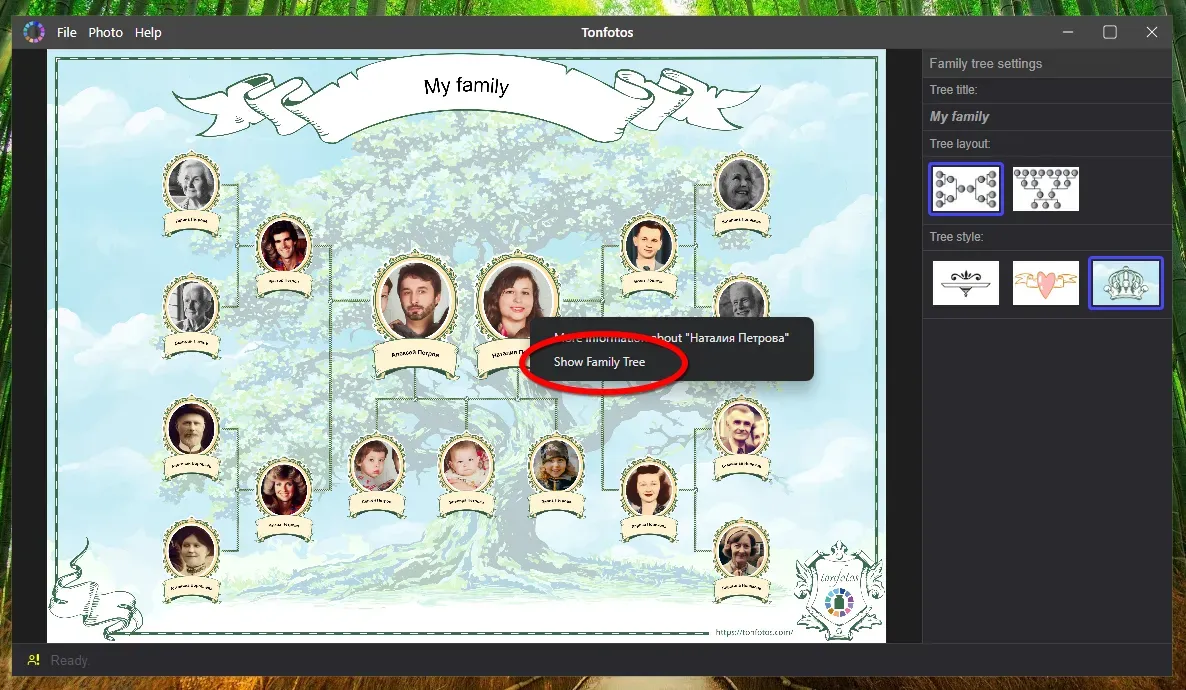
Conclusion
The choice of a NAS server depends solely on your needs and willingness to delve into technical details.
- For beginners, definitely go for a ready-made NAS from Synology. You'll get an elegant, user-friendly solution that just works.
- Advanced users: Look to QNAP for more power and customization options.
- For the enthusiasts: Building your own NAS based on TrueNAS or Unraid will give you complete control and invaluable experience.
If your main goal is to organize your photo archive, no matter what path you take, consider Tonfotos. This program gives you the freedom and powerful tools to work with your memories without being tied to a specific platform.
For myself, I chose a ready-made NAS and Tonfotos to organize a photo archive. Now time is more important to me than power and minor cost savings.